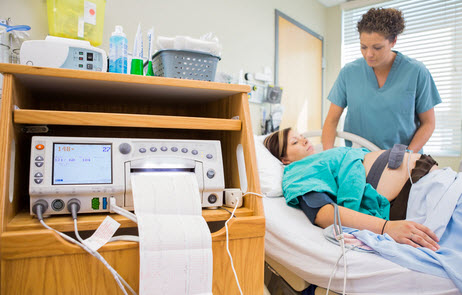Many times, nurses and doctors are completely unprepared for shoulder dystocia, which is one of the leading causes of birth injuries. Even if the baby is too large to normally drop through the mother’s narrow birth canal, the umbilical cord keeps dropping, and it will basically wrap itself around the baby’s neck. In less than five minutes, hypoxia (lack of oxygen) sets in and brain cells begin dying, a condition that nearly always causes severe brain damage and permanent cerebral palsy.
With the clock ticking, the attending medical staff usually feels intense pressure to do something, and do it quickly. In times of crisis, doctors and nurses are like anyone else, because they often fall back on what they were taught earlier. In these cases, that usually means the outdated “HELPERR” mnemonic.
Call for Help
Shockingly, many medical professionals omit this step. Some people feel that soliciting help is essentially an admission that they made previous mistakes or that they cannot handle the situation; other professionals approach the crisis with a tinge of “I’ve got this” arrogance.
Consider an Episiotomy
Until recently, doctors routinely made tiny, strategically-placed cuts on the mother’s perineum to widen the birth canal, whether the mother needed such assistance or not. However, doctors now know that these incisions have serious side-effects, including:
- Uncontrolled bleeding,
- Infection,
- Future incontinence, and
- Intense pain, especially during intercourse.
As a result, most OBGYNs only perform episiotomies as a last-ditch effort when everything else has failed.
Adjust the Mother’s Legs
This step is the McRoberts Maneuver. To widen the birth canal, the mother raises her legs and bends her knees. Many doctors, especially ones that have practice obstetrics for quite some time, feel that the McRoberts Maneuver is the best way to avoid mechanically-assisted deliveries, which is a little further down the line. However, the clinical evidence supporting this technique is a little shaky, at best, and so the McRoberts Maneuver may essentially be an old wive’s tale that is supported by considerable anecdotal evidence.
Suprapubic Pressure
This intervention should probably be higher on the emergency services ladder, because it is non-invasive and often effective. In mild shoulder dystocia cases, the baby may only need a gentle push, so the doctor gently presses on the mother’s perineum to find the baby’s shoulders, and then basically applies a CPR move just a few inches higher. However, SP is not effective in serious shoulder dystocia cases.
Enter Rotational Maneuvers
By this point, time is really starting to run out, and doctors usually get increasingly desperate, because the opportunity to perform a crash C-section has probably passed. So, to pull the baby out of the birth canal, doctors often turn to some dangerous medical devices.
- Forceps: Some doctors use what are essentially large salad tongs to grab the baby’s head and extract the infant; the extra pressure often causes permanent and disfiguring head injuries along with serious brain injuries.
- Vacuum Extractor: The same side effects often occur if the doctor straps a cap to the baby’s head that is attached to a vacuum hose.
Some doctors simply pull on the baby’s arms to pull down the infant, and this pressure often causes permanent nerve damage under the baby’s arms.
Remove the Posterior Arm and Roll the Mother
Hypoxia is already starting to set in at this point, and to be blunt, many doctors would rather deliver a one-armed infant with brain functions mostly intact than a two-armed permanently disabled child. Rolling the mother over onto all fours, which should probably occur earlier in the process, often helps shift the center of gravity.
The best way to prevent shoulder dystocia-related birth injuries is to recognize the warning signs in advance and not rely on outdated tactics. For a free consultation with an experienced personal injury attorney, contact Reed & Reed. From our office in Brandon, Reed & Reed helps clients in Tampa, New Tampa, Plant City, East Hillsborough County and throughout the state of Florida.
Resources:
aafp.org/afp/2004/0401/p1707.html
ncbi.nlm.nih.gov/pmc/articles/PMC3279180/

